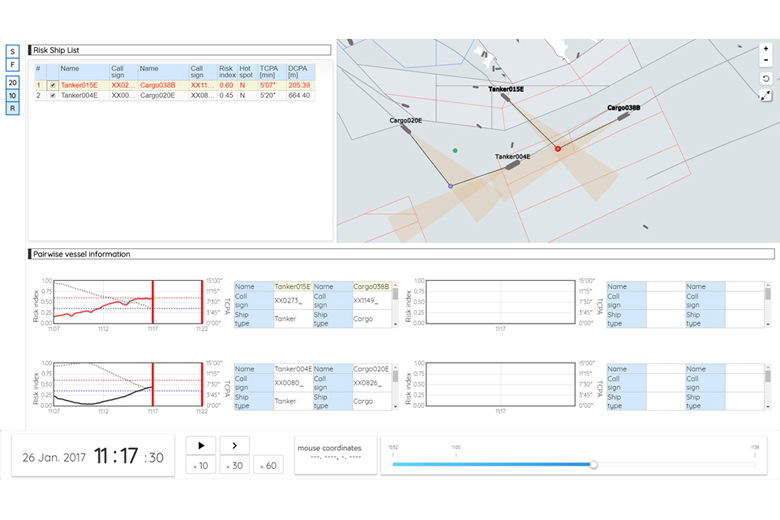MPA testing predictive technology to reduce chances of ship collisions
Sign up now: Get ST's newsletters delivered to your inbox

Named Fujitsu Human Centric AI Zinrai, the system uses artificial intelligence to detect ship collision risks and predict hotspots where risks are higher.
PHOTO: FUJITSU
Toh Ting Wei
Follow topic:
SINGAPORE - The Maritime and Port Authority of Singapore (MPA) and Japanese firm Fujitsu are testing technology that could give ship captains earlier warnings about potential collisions with other vessels.
A two-year field trial of the system has concluded, and further tests will be conducted before authorities decide whether to deploy the system, the MPA said on Tuesday (April 2).
Named Fujitsu Human Centric AI Zinrai, the system uses artificial intelligence to detect ship collision risks and predict hotspots where risks are higher.
An MPA spokesman said: "The technology is more dynamic, it gives you a lot more in terms of timing (to react).
"If you can actually predict much earlier in terms of where a collision might occur... then captains of affected vessels can make decisions earlier."
Currently, maritime traffic controllers warn vessels of a collision risk through a system that detects incidents when ships move unusually close to one another.
Fujitsu said that its risk detection technology will theoretically be able to give operators a lead time of about five minutes to warn ships of any possible collision.
Separately, it claims its dynamic risk hotspot detection technology could detect risks up to 15 minutes in advance.
The company said: "As vessel operations and interactions become more complex, the ability to detect and predict vessel movements in advance, especially in high-density vessel traffic areas like Singapore, is key to managing and reducing collision risks."
Fujitsu added that it will continue working with Singapore to improve the technology. It plans to deliver services that use the technology in the next year.
The firm conducted research and testing on the technology with help from about 10 MPA officers from the Vessel Traffic Management Department and Port Systems Division over two years.
It used traffic data for the Singapore Strait provided by the MPA to pick out information such as examples of collisions or near misses, as well as examples of developing dynamic risk hotspots.
The prediction technology was then compared against human operators.
The Singapore Strait is one of the world's busiest shipping zones, with hundreds of container ships, oil and fuel tankers and dry bulk carriers daily traversing the waters that connect East Asia to India, Europe and Africa.
In February, a turning error by a Greek-registered bulk carrier caused a collision with a Malaysian government vessel in Singapore waters.
In April last year, two tankers collided off Singapore's coast, resulting in a leak of liquefied petroleum gas (LPG) from one of the ships.

